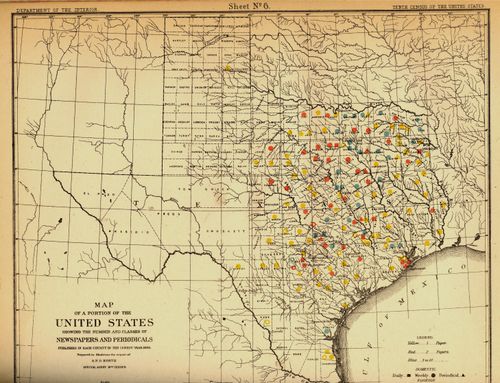JF Ptak Science Books LLC Post 676 Blog Bookstore
The idea of the frontier in American history has been around for quite some time, made famous and mostly-invented (and closed) by Frederick Jackson Turner in 1893, and expanded, imagined, enticed, magnified, micro-analyzed, and generally messed with ever since. There have been all sorts of frontiers introduced into the study of the birth, expansion and filling-up of this country, from the very earliest colonial periods of Indian frontiers, “far-western” river frontiers of the Connecticut, Delaware, Hudson (!) and Susquehanna, to the Appalachian frontier of the early western reaches of the colonies, to the transportation frontier, the slavery frontier, the gold and mining frontier, the gun frontier and so on.
I’ve got another bit to add: the newspaper frontier.
I just happened upon a volume of the US
Census of 1880, with a special report by S.N.D. North entitled History and Present Condition of the
Newspaper and Periodical Press of the United States…and published in
1882. What provoked me was the map of
Texas needed more papers: there were 1.5 million people living in the
massive state in 1880, almost twice as many as there were in 1870, and almost
half of what there would be there in 1900.
Florida was another story, entirely—even in 1880, which is only 130 years ago, there
were only 270,000 people living in the entire state, not even close to half of
the county population of Pinelas today.
*Just for the sake of comparison, the number of periodicals per state for 1880 was as follows: Illinois, 1017; New York, 1411; Pennsylvania, 973; Ohio, 774; New Jersey 215. Also, oddly, the average circulation of the Florida and Texas papers was roughly the same: 1,282 for Texas and 1306 for Florida (with an average for the country at 4137).




Comments